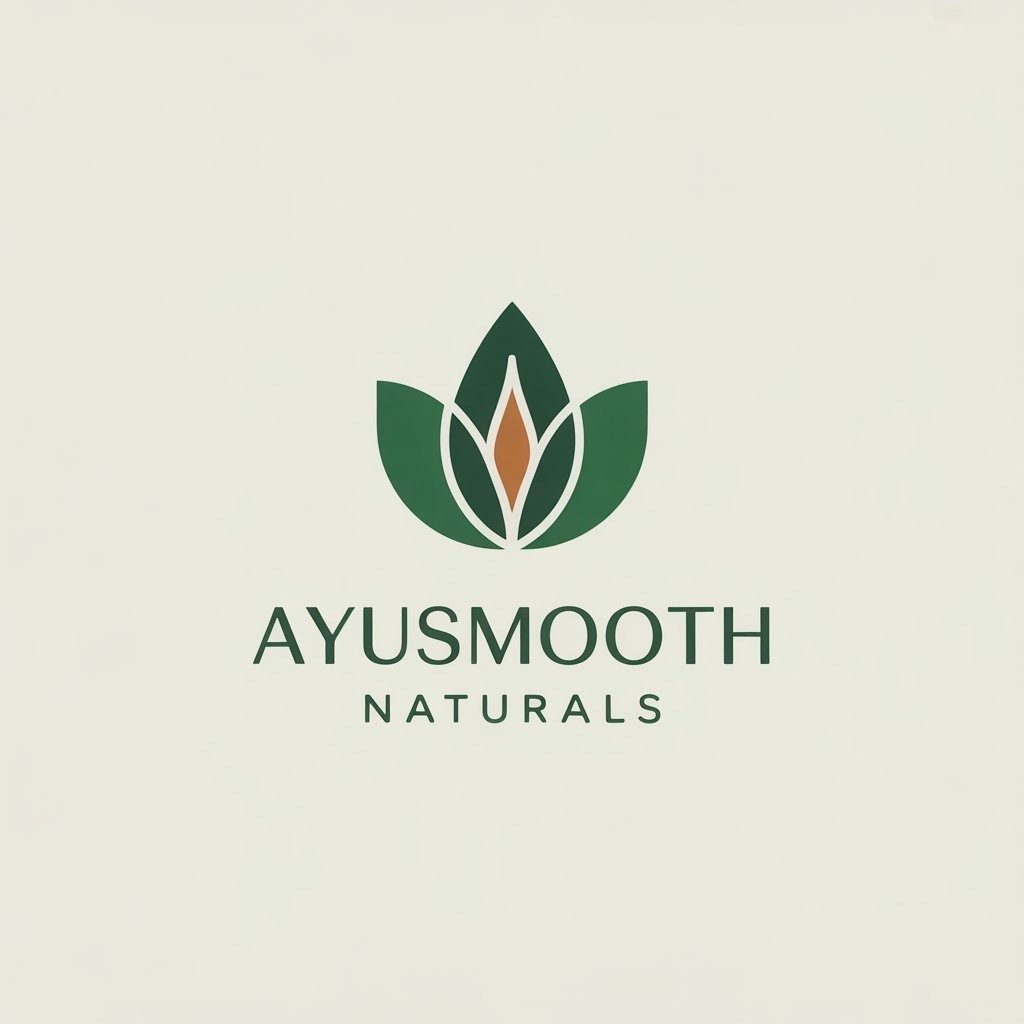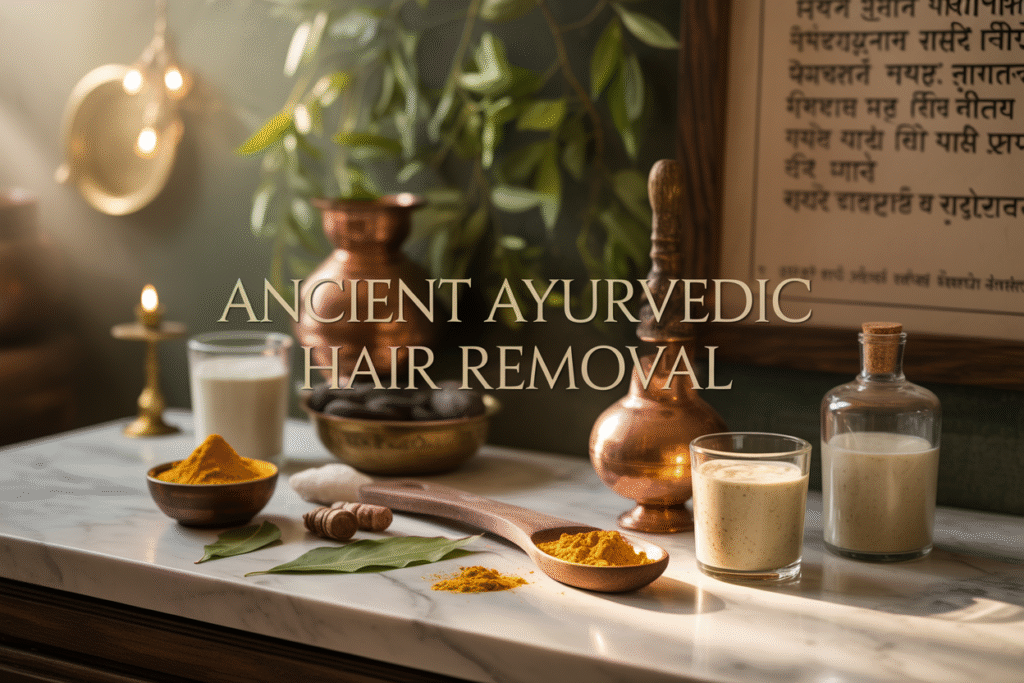Introduction: Beyond the Blade – Discovering a Holistic Path to Hair-Free Skin
For centuries, the quest for smooth, hair-free skin has been a universal preoccupation, forming a cornerstone of beauty, hygiene, and personal presentation across civilizations. From the rudimentary tools and poultices of antiquity to the sophisticated laser and chemical treatments of today, humanity has explored an exhaustive range of methods – shaving, waxing, electrolysis, epilating, and depilatories. Yet, for countless individuals, this relentless pursuit often extracts a significant toll: chronic skin irritation, relentless redness, the pain of ingrown hairs, and the disheartening, immediate return of stubble, forcing us back into the never-ending cycle of removal.
We are left to wonder: Is there a method that transcends temporary removal? A process that not only delivers lasting smoothness but also deeply harmonizes with the body’s natural state, actively nurturing the skin, and contributing to a holistic sense of well-being?
The answer lies in the profound wisdom of Ayurveda, the venerable “science of life,” originating in India over 5,000 years ago. Ayurveda is not merely an alternative medicine system; it is a comprehensive, holistic philosophy governing every aspect of health and aesthetics. It posits that true, undeniable beauty is not superficial but radiates outward, reflecting a state of perfect balance among the body’s bio-energies (Doshas), its elemental tissues (Dhatus), the mind, and the spirit. In this system, the skin is revered as a vital organ—a mirror of internal health—and hair is viewed as an extension of our deepest, most primal tissues.
This ancient knowledge holds immense relevance today. While the original texts may not describe modern depilatory creams, their core principles offer an invaluable, timeless framework for managing bodily hair: gently, effectively, and in complete alignment with one’s unique constitution.
Today, this ancient wisdom is being thoughtfully and precisely engineered into modern beauty solutions. Welcome to the world where Ayurvedic principles are not just influencing, but actively revolutionizing contemporary hair removal, leading us toward a path of smoothness that is as profoundly nurturing as it is undeniably effective.
Understanding Hair and Skin in Ayurveda: More Than Just Aesthetics
In Ayurvedic philosophy, every individual is defined by a unique combination of the three Doshas—Vata, Pitta, and Kapha—which represent the elemental forces of Air/Ether, Fire/Water, and Earth/Water, respectively. These bio-energies orchestrate all physiological and psychological processes, influencing traits like metabolic rate, emotional tendencies, skin resilience, and, critically, hair growth patterns and texture.
Understanding your dominant Dosha provides crucial insight into why your hair grows the way it does, why your skin exhibits specific sensitivities, and how to select the most balancing care regimen. Hair itself is considered a Mala (waste product) of the Asthi Dhatu (bone tissue), linking its health and removal directly to the deepest structural health of the body.
Dosha-Specific Hair and Skin Traits:
- Vata (Air & Ether) Types: Individuals with a dominant Vata Dosha often present with fine, thin, dry, and brittle hair. Their skin tends to be thin, delicate, and prone to dehydration, flakiness, and high sensitivity. Harsh hair removal methods, such as vigorous shaving or strip waxing, can dramatically increase Vata, resulting in excessive dryness, persistent itching, and heightened pain perception. For Vata skin, the Ayurvedic need is for methods that are deeply calming (Shanti) and highly moisturizing (Snigdha) to prevent dehydration and trauma.
- Pitta (Fire & Water) Types: Pitta-dominant individuals typically have moderate hair growth that is straight and sometimes darker, occasionally exhibiting premature graying due to excess internal heat. Their skin is characteristically warm, often fair, and highly prone to inflammation, redness, or heat-related reactions like rashes. Heat-generating or chemical-intensive procedures only serve to exacerbate Pitta. This manifests as uncomfortable burning sensations, significant post-removal redness, and localized rashes. For Pitta skin, the Ayurvedic need is for products that are fundamentally cooling (Shitapradhana), soothing, and possess excellent anti-inflammatory properties to neutralize internal heat.
- Kapha (Earth & Water) Types: Kapha types are characterized by thick, dense, heavy, and often oily hair that can grow rapidly. Their skin is generally smooth, cool, and robust, though it may occasionally struggle with excessive oil production or congestion. While physically resilient, heavy chemical usage or poor post-removal hygiene can lead to skin congestion or sluggish healing. Kapha skin benefits from balancing, purifying, and gently stimulating ingredients that prevent stagnation and help maintain smooth texture.
Ayurveda dictates using products and practices that are specifically balancing for the dominant Dosha and, critically, that support the health of the foundational tissues, particularly Rasa Dhatu (lymph, plasma) and Rakta Dhatu (blood), which are responsible for nourishing the skin’s surface.
The Role of Natural, Balancing Ingredients: The Ayusmooth Advantage
The Ayurvedic approach to hair removal centers on the specific botanical ingredients used alongside the removal method. Instead of relying solely on strong chemical agents, a truly Ayurvedic solution systematically integrates powerful botanical agents designed to proactively counteract the potential irritant effects of the hair removal process itself. This intelligent, dual-action mechanism is the core innovation of products like Ayusmooth.
The formulation of Ayusmooth leverages key Ayurvedic ingredients to ensure the process is gentle:
- Turmeric (Haridra): Highly valued in Ayurveda as Varnya (complexion-enhancing) and a natural anti-inflammatory. Its primary purpose in the cream is to reduce post-removal redness, act as a gentle antiseptic, and—aligned with traditional usage—help discourage robust hair regrowth over time. Turmeric is particularly essential for balancing the fiery Pitta constitution.
- Sandalwood (Chandana): Celebrated in the texts as intensely cooling (Shitapradhana) and deeply calming. Sandalwood works to soothe the skin, effectively reduces heat (Pitta), minimizes immediate irritation, and imparts a pleasant, natural aroma. It is ideally suited for sensitive Pitta skin.
- Aloe Vera (Kumari): Renowned for its cooling (Shitapradhana), moisturizing (Snigdha), and healing (Ropana) properties. Aloe Vera provides intensive hydration to counteract the drying effect of depilatories, speeds up essential skin repair, and is considered universally balancing across all Doshas. It is crucial for preventing Vata dryness and healing Pitta inflammation.
- Rosewater (Gulab Jal): Used traditionally as a natural astringent (Sankochaka). It gently closes pores post-removal, refreshes the skin, and offers mild anti-inflammatory benefits, ensuring a clean, calm, and toned finish.
Ayusmooth, by carefully infusing these time-tested botanicals into its advanced formula, fundamentally shifts the experience from a harsh, irritating chore to a mindful, skin-caring act. The product’s hair-dissolving efficiency is rooted in modern chemistry, but its gentleness, after-feel, and holistic approach are purely Ayurvedic.
Integrating Ayusmooth into Your Ayurvedic Dinacharya (Daily Routine)
Ayurveda teaches that profound health and enduring beauty are maintained through a disciplined Dinacharya (daily regimen). Incorporating hair removal into this routine is not merely a scheduling choice; it elevates the process from a sporadic chore to an intentional, structured act of self-care, known as Sva-asthya (remaining established in the self).
1. Preparation (Purva Karma): Balancing and Cleansing
The Ayurvedic routine begins with meticulous preparation, perfectly aligning with Step 2 (Prepare Your Canvas) of the Ayusmooth guide.
- Abhyanga Connection: While Abhyanga (self-oil massage) is central to Vata and Pitta balance, oils prevent depilatory cream efficacy. If you practice Abhyanga, the area to be treated must be thoroughly washed with a gentle, non-stripping cleanser afterward to remove all oily residue.
- Dry Brush Alignment: Garshana (dry brushing) is an excellent detoxifying practice for Kapha types. However, dry brushing should be performed days before or after hair removal. Never dry brush immediately before using Ayusmooth, as this can over-exfoliate the skin and create microscopic trauma, severely exacerbating Pitta and Vata sensitivity and increasing the risk of chemical burn.
2. Application (Pradhana Karma): Mindful Action
The application of Ayusmooth (Steps 3 & 4) must be executed with Dhyana (mindfulness) and precision.
- Pitta Precaution: If you are a Pitta-type individual, whose body naturally runs warmer, and the ambient temperature is high, you must take preemptive cooling steps. Stabilize the skin temperature by sitting in a cool room or applying a cool, damp compress to the area for a minute beforehand. Rushing the process will also increase internal heat (Pitta).
- Vata Precaution: If you are Vata-dominant and prone to dryness or anxiety, ensure the room is comfortably warm and calm to avoid muscle tension and associated stress. Apply the cream gently, without rushing, to honor the Vata need for slowness, stability, and calm.
- Kapha Focus: Kapha types must be vigilant in applying a thick, even layer (Step 3) to their often dense hair, ensuring the cream is given the full, necessary time (Step 4) to penetrate, as their hair can be more stubborn.
3. Aftercare (Paschat Karma): The Shamana Ritual
This is arguably the most crucial step for achieving Ayurvedic harmony and preventing irritation. Shamana Chikitsa (pacifying therapy) is the Ayurvedic term for alleviating imbalances without purging or aggressive action. Post-removal skin is vulnerable, slightly depleted, and often warm (Teekshna).
- Cooling Therapy (Shitala): Immediately after rinsing off Ayusmooth (Step 5), the skin demands cooling. Use cool or lukewarm water, and absolutely avoid hot water. A final splash of cool Rosewater can act as a gentle, natural toner and astringent, helping to close the pores and neutralize surface heat without the use of harsh, stripping chemicals.
- Restoration (Rasayana): The next step is replenishment. The skin’s protective barrier requires rapid restoration. Immediately apply a soothing, non-comedogenic Ayurvedic moisturizer or balm. Ideally, use a dedicated post-removal product containing Aloe Vera, Sandalwood, or Neem. This practice replenishes the Sneha (natural lubrication) of the skin, counteracting the drying effect of the chemical depilatory and preventing a Vata-driven increase in dryness. This vital step helps restore the function of Bhrajaaka Pitta, the Dosha sub-type responsible for healthy skin glow and radiance.
- Avoiding Agni (Heat) and Friction: For a minimum of 24 hours, strictly adhere to the Ayurvedic wisdom of avoiding excess heat (Agni) and friction. This means no sunbathing, no saunas, no very hot showers, and no intense exercise that induces heavy sweating or tight clothing. Heat naturally increases skin sensitivity (Pitta) and sweating can trap residue. This period of quiet care is essential for stabilizing the skin and allowing the soothing botanicals to work their restorative magic.
Conclusion: The Future of Beauty is Ancient
The development of Ayusmooth Hair Removal Cream is a compelling, elegant testament to the powerful convergence of ancient Ayurvedic wisdom and modern scientific efficacy. It offers a tangible, accessible, and deeply respectful way to apply the holistic, nurturing principles of Ayurveda to a common and often challenging modern grooming need.
By moving decisively beyond the aggressive, superficial approaches of traditional hair removal methods and embracing a process that systematically emphasizes meticulous preparation, gentle application, and deeply restorative aftercare, you are not simply removing unwanted hair—you are actively participating in a time-honored holistic beauty ritual. You are honoring your body’s natural constitution, consciously pacifying the Doshas that govern your skin health, and supporting the long-term vitality, health, and luminosity of your skin.
Choose Ayusmooth. Choose Ayurveda. Choose a path to smoothness that is rooted in compassion for the self and wisdom thousands of years old. The secret to your most radiant, flawlessly smooth skin is simple, holistic, and waiting for you to discover it.

